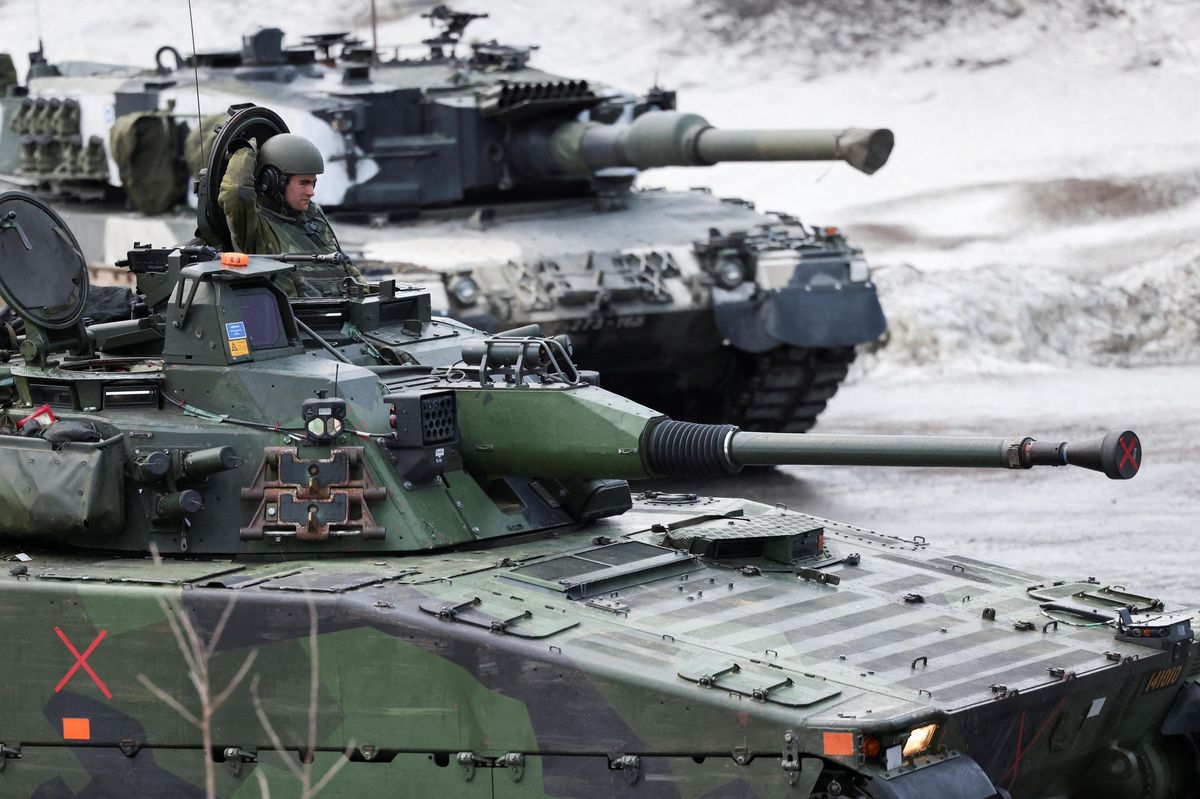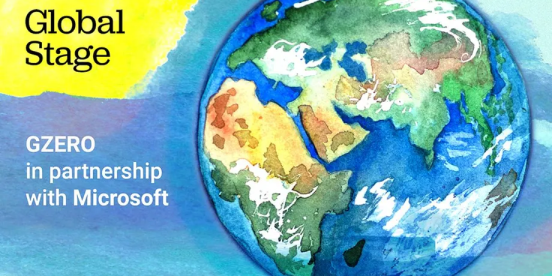We have updated our Privacy Policy and Terms of Use for Eurasia Group and its affiliates, including GZERO Media, to clarify the types of data we collect, how we collect it, how we use data and with whom we share data. By using our website you consent to our Terms and Conditions and Privacy Policy, including the transfer of your personal data to the United States from your country of residence, and our use of cookies described in our Cookie Policy.

Swedish and Finnish tanks during NATO's "Cold Response 2022" military exercise in Norway.
Russia’s invasion of Ukraine has been a boon for NATO.
The alliance that former President Donald Trump wanted to pull out of and continues to call a “paper tiger” is more relevant and united than it has been in years. Its members are poised to wean themselves off Russian oil and gas, expand their defense spending, and are now also accepting — and expecting — new members.
Enter Finland and Sweden, two Nordic countries with a history of neutrality now moving closer to official NATO membership. While they insist they will be making their decisions on whether to join the defense pact independently, both Helsinki and Stockholm are expected to announce their bids by May.
Although the center-left governments in Finland and Sweden have historically opposed joining NATO, opinion polls show that Putin’s actions in Ukraine have primed their parliaments for change.
NATO couldn’t have asked for more. Finland and Sweden have the most far-reaching level of defense cooperation among the Nordic states. They’ve collaborated often and well with each other; are active members of Nordic Defense Cooperation, the pan-Nordic military group which enables joint operations; and are two of six Enhanced Opportunity Partners for NATO, the closest classification of partnership with the alliance, a status they share with Ukraine.
“Sweden and Finland are very close partners of NATO. They are militarily advanced and technologically savvy. Their traditions of ‘total defense’ would also add to NATO's understanding of how allied societies must build resilience against disruptive threats,” said Dan Hamilton, a senior fellow at the Brookings Institution.
Considering its past conflicts with the Russian Empire and the Soviet Union, Finland has decades of military intelligence experience watching the Russians. And both countries have supported NATO missions in Afghanistan, Iraq, and the Balkans.
“The alliance would be greatly strengthened by their membership,” Hamilton added.
The immediate impact will be geographic. For the duration of the Cold War, NATO shared just a short border with Russia, in northern Norway. In 1999, this increased to 270 miles, as Poland connected with the Russian enclave of Kaliningrad. After the three Baltic states — Estonia, Latvia, and Lithuania — joined in 2004, the figure jumped to 770 miles.
Now, Finland’s 800-mile boundary, which touches mostly uninhabited forests, stands to double the length of NATO’s borders with Russia — quite the opposite of what Vladimir Putin was hoping for when he decided to invade Ukraine.
The two new members would also alleviate some pressure on NATO support to the Baltic states, which is currently constrained through the sliver of territory between Belarus and Kaliningrad known as the Suwalki Gap, Hamilton said. And the expansion would connect all of the Nordic region into a NATO space, raising the threshold of risk for Russia should it contemplate any further aggression.
While Finland and Sweden insist that NATO membership is still under consideration, Moscow is not taking matters lightly. The Kremlin has threatened the deployment of nuclear and hypersonic weapons in the Baltics to bolster defenses.
“If Sweden and Finland join NATO, the length of the alliance’s land borders with the Russian Federation will more than double. Naturally, these borders will have to be strengthened,” said Dmitry Medvedev, a close Putin ally and former president of Russia.
Despite Moscow’s saber-rattling, even critics of NATO expansion are changing their minds following Putin’s brutal actions in Ukraine.
“We can’t be afraid of our own shadow when Putin is invading innocent neighboring countries,” said Michael O’Hanlon, director of research at Brookings and a longtime opponent of extending NATO membership to Ukraine. In the past, O’Hanlon proposed a zone of neutrality that would include not only Ukraine but also Finland and Sweden.
Putin’s actions have changed his mind, and O’Hanlon sees no reason to bow to Russian pressure over its sphere of influence extending to the Nordic states.
“Finland and Sweden clearly pose no threat to Russia. Russia has no legitimate irredentist claims on either. Both are solidly pro-western. But neither can be expected to sustain neutrality as a policy given Putin’s new unpredictability and brazen brutality,” O’Hanlon explained, noting he’s no longer opposed to their membership.
As NATO partners, Sweden and Finland are not covered by the alliance’s famous Article 5 — the “all for one, one for all” clause that considers an attack against one member to be an attack against all members. NATO understands this, and Secretary-General Jens Stoltenberg has already included the two Nordic neighbors in intelligence-sharing about the war in Ukraine.
“I have had close contact with the political leadership both in Sweden and Finland over the last months,” Stoltenberg said in a recent press conference. “And I have conveyed the message that it's for them to decide of course, but if they apply, I expect that 30 allies will welcome them and that we will find ways to also address the concerns they may have about this interim period between the have applied [sic] and until the last ratification has taken place.”
- Podcast: Why Putin will fail: former Finnish PM Alexander Stubb ... ›
- Russia has pushed Finland towards full NATO membership: former ... ›
- Risks of Russia losing: Putin, Ukraine, and potential for escalation - GZERO Media ›
- EU and India restart relationship and trade negotiations - GZERO Media ›
- Finland & Sweden NATO bid faces problems with Turkey’s Erdogan - GZERO Media ›
- Macron's speech weakens the West's unity against Putin - GZERO Media ›
- Ukraine’s long road to EU membership ›
- Ian Explains: how NATO got its groove back - GZERO Media ›
- Podcast: NATO’s Russia problem: the increasing danger of military confrontation between nuclear powers - GZERO Media ›
- We should not underestimate Putin, says NATO’s Benedetta Berti - GZERO Media ›
- NATO has a Trump problem - GZERO Media ›
- Greece's PM on NATO, Navalny, and the wake-up call to Europe - GZERO Media ›
- Why Sweden and Finland joined NATO - GZERO Media ›
